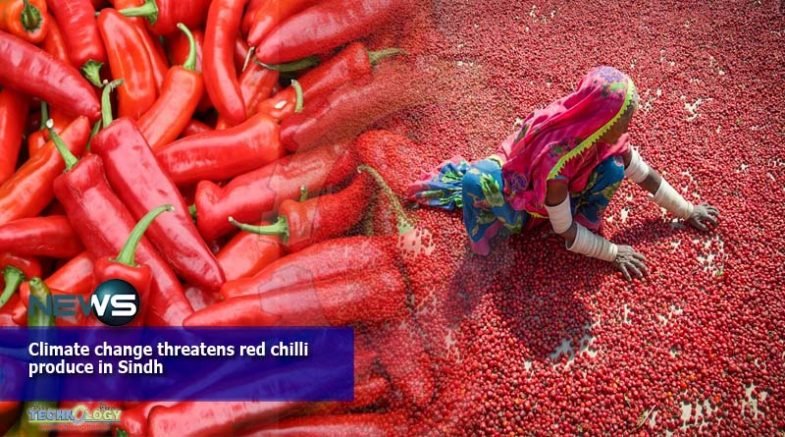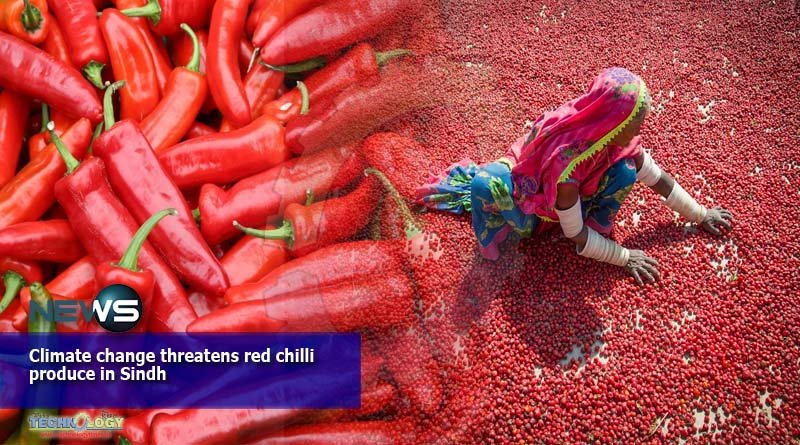The Kunri farm in Sindh is common for the hub of red chilli in Asia and still has the country’s biggest chilli bazar of Pakistan.
 The area is responsible for 85 percent of all red chilli production in Pakistan, contributing 1.5 percent of the country’s GDP.
The area is responsible for 85 percent of all red chilli production in Pakistan, contributing 1.5 percent of the country’s GDP.
Climate change has potential impacts on agriculture but the farming community is not even aware of it. Agriculture is the backbone of Pakistan’s economy. It contributes 21 percent to the GDP of the country. Almost 67 percent of the population is involved directly or indirectly with agriculture.
The major risks in agriculture caused by different internal and external factors are classified as the production, marketing and financial risks.
Whereas the major reasons for low productivity and reliability of farm income include the non availability of improved seeds, fertilizers used, weed infestation, shortage of irrigation water, drought and seasonal variation of rainfall, inadequate research efforts and inefficient extension services with respect to many agricultural crops.
Climate change threatens red chilli harvest in Pakistan’s Sindh province. Extreme heat has killed off many of the peppers before workers have a chance to harvest them from the vines.
Particularly, the province of Sindh contributes around 85% of red chilli production in Pakistan and the fourth largest producer of red chillies after India, China and Mexico.
Farmers would normally sow chilli seeds in January, but the weather cycle in the region is changing and they are still waiting for suitable conditions to grow their crops.
Red chillies cost Rs 7,000 (46 US dollars) per ton in 2018 but last year soared to Rs 18,000 (117 US dollars) per ton.
The expensive prices mean many buyers have stopped importing chillies from Pakistan which shows that the market could be left with unsold stocks of unaffordable chillies.
Chilli production has plummeted last year despite perfect weather conditions because of a lack of water for irrigation.
This has been as massive let down for farmers. There are an estimated 160,000 chilli growers in Kunri alone.
Only 40% of the usual 100,000 acres that is cultivated for chilli every year in Umerkot and Mirpurkas districts was covered this year.
